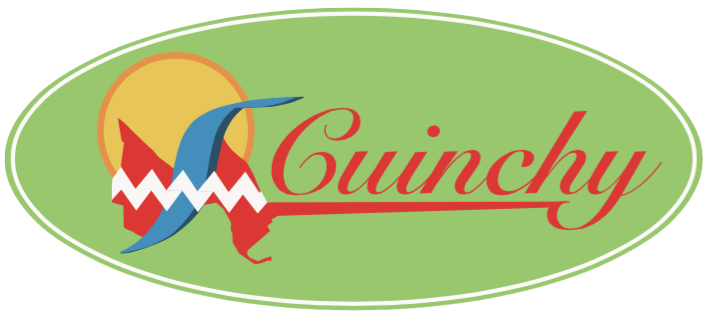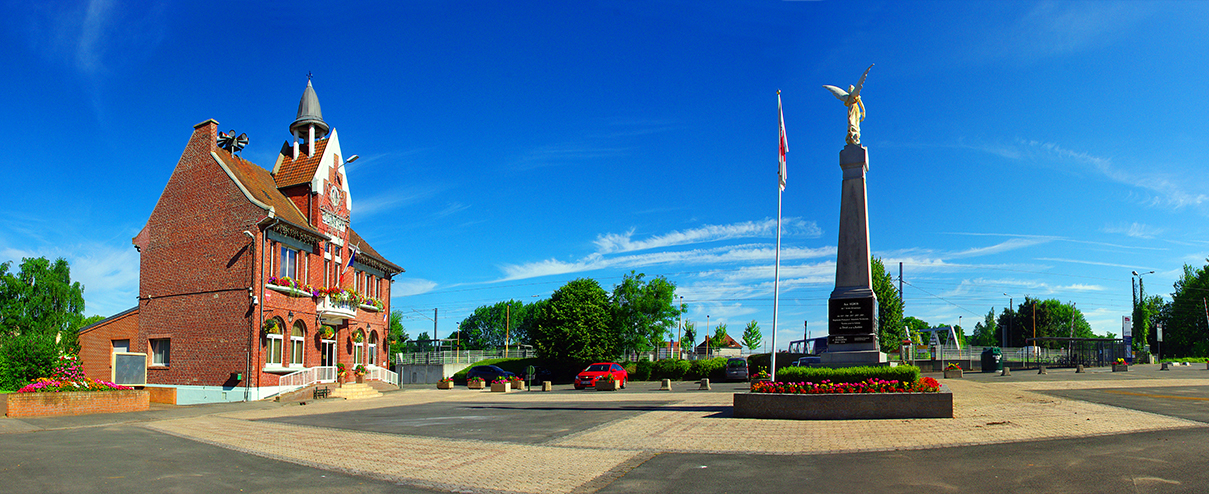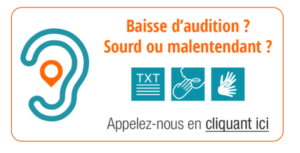La Libération de Cuinchy
Le 26 août 1944, le Général Bernard Montgomery du 21ème groupe d’armée donne pour instruction à ses commandants d’armée, les généraux Harry Crerar (1er corps canadien) et Miles Dempsey (2ème armée britannique) d’exécuter trois choses :
- détruire les forces allemandes dans le Pas de Calais et la Flandre
- prendre l’important port d’Anvers
- poursuivre la progression vers la Ruhr, cœur industriel de l’Allemagne.
Le 27 août, afin de faciliter leur avancée dans le Nord de la France, Jean Lejeune dit « Bastien », colonel de l’état-major des Forces Françaises de l’Intérieur (FFI), donne les instructions :
- fournir l’infanterie d’accompagnement aux blindés alliés
- « ratisser » bois et bosquets pour capturer les fuyards et les isolés.
Le 28 août, le colonel Gaston Dassonville dit « Timéon », commandant des FFI du réseau Voix du Nord lance l’appel suivant : « maintenir le pont de bois de Cuinchy intact jusqu’à l’arrivée des forces alliées ».
Le pont étant alors l’un des seuls endroits permettant de circuler et de sécuriser les deux berges du canal d’Aire à La Bassée.
Les Allemands ayant par ailleurs établi une ligne défensive derrière le canal suite à l’avancée des alliés depuis la Normandie.
Dès le 29 août, environ 300 FFI de la région, sous le commandement d’Edouard Fontaine dit « Raoux », arrivent à Cuinchy. Ils occupent la mairie, la gare, le pont et installent leur quartier général dans la salle des fêtes. Ils forment une barricade avec du matériel agricole sur le pont. Les Allemands se replient derrière le canal. Pour franchir le pont, ils placent le cuinchynois Carolus Dupayage en tête du convoi.
Le 30 août vers 23h, le FFI de Noeux les Mines, Joseph Potaczek, est tué rue Berthelot.
Le 31 août à Cambrin rue Nationale, une colonne de prisonniers russes se fait mitrailler par des avions britanniques. Certains Russes s’échappent, d’autres sont blessés ou tués.
Le 1er septembre, Julien Clément, Maire de Cuinchy, fait enterrer 13 Russes dans la fosse commune du cimetière communal. Les blessés sont rassemblés à la ferme de Théophile Defief route nationale et amenés à l’hôpital de Bully les Mines.
Le même jour, place du bas Cuinchy, Florimond Dollet dit « Spada » tue un Allemand.
Rue Jean Jaurès, les Allemands lancent deux grenades dans la maison de Clovis Dassonville.
Le 2 septembre, Fernand Legrand et Etienne Delerue d’Auchy les Mines se font tuer à Festubert.
Rue Anatole France, Raymond et Emile Dassonville tirent depuis le clocher de l’église sur une colonne d’Allemands, ceux-ci ripostent. Ils tuent Rémi Devrainche et blessent Rosa Cadez à proximité de l’école.
Peu après, le premier accrochage a lieu sur le pont. Louis Dobel, commandant la 6ème compagnie de FFI de Loos en Gohelle se fait tuer en voulant observer les troupes ennemies installées dans les bâtiments de la coopérative agricole à la lisière de Givenchy lès La Bassée. Les Allemands tentent alors de détruire le pont en l’incendiant. Pendant qu’ils se replient momentanément vers Givenchy Lès La bassée, les pompiers de la défense passive de Cuinchy essayent d’éteindre l’incendie avec la pompe à bras. Le pont est endommagé sur le côté nord.
Théo Hofmann est blessé dans la maison garde-barrières. De nombreux Allemands sont fait prisonniers rue Jean Jaurès.
Le 3 septembre, Paul Roussel est tué en allant faire paître sa chèvre le long du canal.
« Spada » est retrouvé blessé, il est transporté à l’hôpital de Bully Les Mines.
La libération s’accélère. les premiers éléments de la 7ème division blindée britannique, « les rats du désert », partis de Saint-Pol à 15h et passant à Noyelles à 17h, arrivent en fin d’après-midi mais n’arrivent pas à franchir le pont. Il faut l’intervention du lieutenant Hugh Beach du 621st escadron de campagne des Royal Engineers pour que la situation évolue.
L’officier est grièvement blessé lors d’une reconnaissance sur le pont pour s’assurer que l’incendie du pont n’empêchait pas le passage des chars alliés. Son sauvetage est possible grâce à l’action du lance-sergeant Bill Tynan et du driver Frederick Harris. Néanmoins, avant d’être évacué, le lieutenant Beach réussit à transmettre les informations nécessaires aux chars pour prendre le pont dans la soirée.
Lors de la progression des chars sur la berge nord, rue Jean Jaurès, les soldats Diplock et Carpenter de la rifle brigade sont tués par un obus en provenance du petit bois de Givenchy Lès La Bassée, leur véhicule de reconnaissance est détruit. Ils sont enterrés provisoirement sur place. En fin de journée, après le passage du dernier char de la colonne, le pont s’effondre et nécessite la pose de rampes métalliques durant la nuit. Trois Allemands sont tués.
Le 4 septembre, dès l’aube, afin de neutraliser le seul passage possible qu’est le pont du canal, des obus allemands tombent toujours sur Cuinchy. Cinq allemands sont tués. Pendant ce temps, les régiments britanniques traversent à nouveau le canal et font mouvement pour couper l’axe La Bassée-Estaires.
Vers 14h, rue Basly, Mesdames Marguerite Berthe, épouse de Louis Bernard père, et Marie Pottier, épouse de Louis Bernard fils se sont tuer par des tirs de quatre canons allemands tirant sur Cuinchy depuis le bois Fréteur de Lorgies. Elles allaient se mettre à l’abri au fond du jardin.
En fin de journée, conformément aux ordres de mouvement de la 7ème division blindée britannique, une partie de la division fait mouvement vers Lens puis Seclin. La frontière belge est franchie à Toufflers vers 22h15.
Durant ces combats, les FFI ont fait plus d’un millier de prisonniers allemands.
Durant ces hostilités, des Cuinchynois signent des engagements. Denis Magniez participera à la libération de Dunkerque, Raymond Henri Dassonville et Michel Jean Defrance seront tués en Indochine.
On August 26,1944, General Bernard Montgomery of the 21st Army Group instructed his army commanders, General Harry Crerar (1st Canadian Corps) and General Miles Dempsey (2nd British Army) to carry out three objectives:
– destroy the German forces in the Pas-de-Calais and in Flanders.
– capture the important port of Antwerp.
– continue to make headway to the Ruhr area, the industrial heart of Germany.
On August 27, so as to facilitate their breakthrough in Northern France, Jean Lejeune, also known as «Bastien», Colonel for the Staff of the French Forces of the Interior (FFI) instructed to:
– provide the supporting infantry of the allied tanks.
– search through woods and groves to find runaways and isolated soldiers,
On August 28, Colonel Gaston Dassoneville, also known as «Timéon», commander of the FFI of the Voix du Nord network launched an appeal to «maintain intact the wooden bridge of Cuinchy until the allied forces arrive».
At that time, the bridge was one of the very few places where one could move around and secure both banks of the canal d’Aire à La Bassée.
Because the allies had made a breakthrough from Normandy, the Germans had set up a defensive line just behind the canal.
As soon as August 29, about 300 members of the FFI arrived in Cuinchy, under the command of Edouard Fontaine, also known as «Raoux». They occupied the Town Hall, the train station, the bridge and settled their headquarters in the municipal room. They erected barricades on the bridge with agricultural equipment. The Germans retreated behind the canal. To cross the bridge, they placed Carolus Dupayage, a man from Cuinchy at the head of the convoy.
On August 30, around 11pm, Joseph Potaczek, a FFI member from Noeux-les-Mines, is killed in Berthelot street.
On August 31, in Cambrin on the national road, a convoy of Russian prisonners was strafed by British war planes. Some Russians escaped, others were wounded or killed.
On September 1, Julien Clément, mayor of Cuinchy, decided to have 13 Russians buried in the mass grave of in the municipal cemetery. Those who were wounded were gathered in a farm which belonged to Théophile Defief, on the national road and then, they were brought to a hospital in Bully-les-Mines.
On the same day, on Bas Cuinchy square, Florimond Dollet, as known as «Spada», killed a German.
In Jean Jaurès street, the Germans threw 2 grenades in Clovis Dassonville’s house.
On September 2, Fernand Legrand and Etienne Delerue, from Auchy-les-Mines, were killed in Festubert.
In Anatole France street, from the church bell-tower, Raymond and Emile Dassonville shot at a German convoy; in response the Germans retaliated and killed Rémi Devrainche and wounded Rosa Cadez near the school.
Shortly after, the first skirmish took place on the bridge. Louis Delobel, commander of the 6th Compagny of FFI of Loos-en-Gohelle was killed as he wanted to watch the German troops who were inside the agricultural cooperative buildings on the outskirts of Givenchy-lès-la Bassée. Then, the Germans tried to destroy the bridge by setting fire to it. While they were momentarily retreating to Givenchy-lès-La Bassée, the firemen from the passive defence in Cuinchy tried to put out the fire with a hand pump. The bridge was damaged on its North side.
Théo Hoffman is hurt in the gate-keeper house. Many Germans are captured in Jean Jaurès street.
On September 3, Paul Roussel was killed as he was grazing his goat along the canal.
«Spada» is found wounded, he is transported to a hospital in Bully-les-Mines.
The liberation then accelerated. The first members of the British 7th Armoured Division, the «Desert Rats» who had left Saint-Pol at 3pm and were in Noyelles at 5pm, arrived in the late afternoon but they were unable to cross the bridge. The situation developed favourably thanks to the intervention of Lieutenant Hugh Beach of the 621st Field Squadron of Royal Engineers.
The officer was seriously hurt while reconnoitering the bridge; he wanted to make sure that the fire would not prevent the allied tanks from crossing it. He was saved by Sergeant Bill Tynan and Frederick Harris, a driver. Nervertheless, before he was evacuated, Lieutenant Beach succeeded in giving the necessary information to the tanks so as to take control of the bridge in the evening.
As the tanks were making their ways on the Northern bank, in Jean Jaurès street, soldiers Diplock and Carpenter of the Rifle Brigade were killed by a bombshell coming from the little wood of Givenchy-Lès-La Bassée. Their recdonnaissance vehicle was destroyed.They were temporarily buried on the spot. At the end of day, after the last tank of the convoy had crossed, the bridge collapsed and it was necessary to fix metal ramps during the night. Three Germans were killed.
On September 4, at dawn, so as to neutralize the bridge over the canal, which was the only possible passage, German bombshells were still falling on Cuinchy. Five Germans were killed. Meanwhile, the British regiments were crossing the bridge again and moved to cut the way between La Bassée and Estaires.
Around 2pm, in Basly street, ladies Marguerite Berthe, Louis Bernard Sr ‘s wife and Marie Pottier, Louis Bernard Jr’s wife, were killed by shots from 4 German cannons shooting on Cuinchy from the Fréteur wood in Lorgies. They were seeking shelter at the back of their garden.
At the end of the day, in compliance with the move orders of the British 7th Armoured Division, part of the Division headed towards Lens from Seclin. The Belgian border was crossed in Toufflers at about 10.15pm.
During the fights, the FFI members captured more than 1,000 Germans.
During the hostilities, some inhabitants of Cuinchy signed commitments. Denis magniez will take part in the liberation of Dunkirk, Raymond Henri Dassonville and Michel Jean Defrance will be killed in Indochina.


